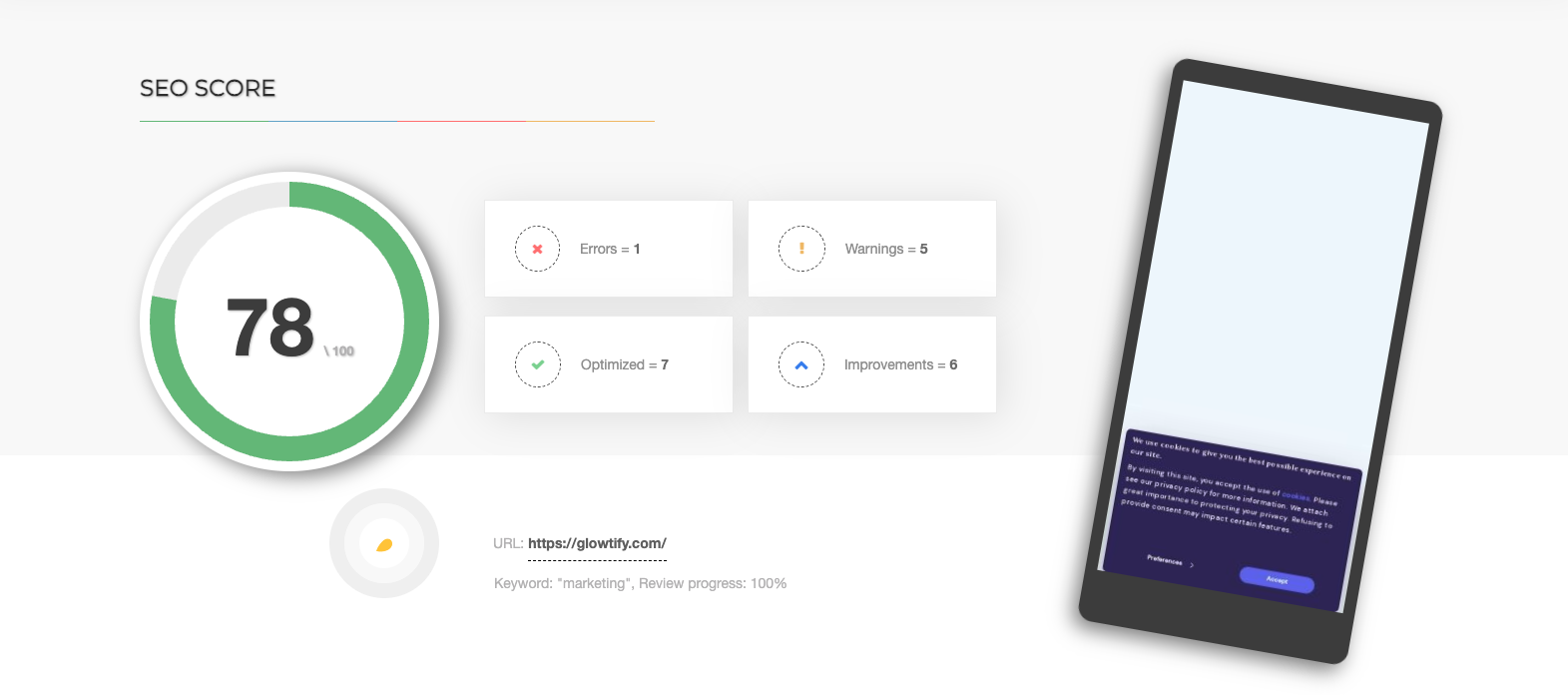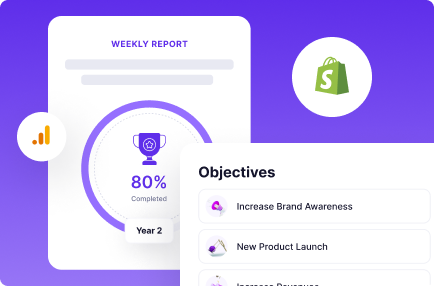Table of Contents
Business owners should set and achieve goals. So, when it comes to your e-commerce website, what are your goals? Are you looking for ways to increase traffic and sales?
Would you like to improve customer satisfaction? Are you looking to expand your online presence? Whatever your goals, it’s essential to keep them in mind as you design and build your website.
By creating a strategy and sticking up to it, you can succeed with your e-commerce venture. According to research, e-commerce website goals were focused on traffic and sales in past years.
However, there has been a shift towards goals concentrating on customer experience in recent years. This change is likely due to increased competition in the e-commerce space.
With so many online businesses, it’s become more important to stand out from the crowd and offer a superior customer experience. So what are you waiting for? Start setting some goals!
Most Important Website Goals for Ecommerce Websites.
Almost all of the e-commerce website goals identified by businesses in our research were related to social media, SEO, and content marketing. These business has set their website goals to acquire new customers, increase traffic to their website, and improve their search engine ranking.

- Increasing traffic from social media
- Getting more leads from SEO
- Creating more compelling content
- Better use of email marketing
- Improved shopping cart abandonment rates
- Increased conversion rates
- Increased customer satisfaction
- Improved retention/loyalty among customers
- More effective use of coupons/discounts
- Better overall website design and layout
1. Increasing traffic from social media.
Social media is a high-powered tool that can drive traffic to your e-commerce website. To increase traffic from social media, you’ll need to create compelling content and post it regularly.
You should also make sure to include links back to your website in your posts. Additionally, you can use social media ads to drive traffic to specific pages on your website.
2. Getting More Leads From SEO.
SEO can be a great way to win more traffic to your e-commerce website. Optimizing your website for search engines can improve your search engine ranking and get more visibility for your business.
You’ll need to dnd keyword-rich content to optimize your website for SEO. You should also include links to your website on your social media posts and email signatures.
3. Creating More Compelling Content.
Content is all-important for both SEO and social media. Creating high-quality, relevant content can attract more traffic to your website and improve your search engine ranking. Additionally, compelling content will help you engage with your audience on social media and encourage them to share your posts.
4. Better Use of Email Marketing.
Email marketing can be a game changer in driving traffic to your e-commerce website. By sending out regular emails with links to your latest products or blog posts, you can keep your customers engaged and compel them to visit your website. Additionally, you can use email marketing to promote special offers and discounts.
5. Improved Shopping Cart Abandonment Rates.
For e-commerce businesses, Shopping cart abandonment is a real challenge. By making it easy for customers to find and purchase using their shopping cart. Additionally, you can offer incentives such as free shipping or discounts to encourage customers to complete their purchases.
6. Increased Conversion Rates.

The conversion rate is the total of visitors to your website who take the desired action, such as making a purchase or signing up for a newsletter. By increasing your conversion rate, you can improve the performance of your e-commerce website.
There are several strategies to boost conversion rates, such as optimizing your website for conversion, providing relevant and targeted content, and offering discounts or incentives.
7. Increased Customer Satisfaction.
Customer satisfaction is essential for any business, but it’s vital for ecommerce businesses. By delivering a great customer experience, you can increase the likelihood that customers will return to your website and make a purchase.
There are so many strategies to improve customer satisfaction, such as offering fast shipping, easy returns, and good customer service.
8. Improved Retention/Loyalty Among Customers.
It’s essential to keep your customers getting back to your website. You can encourage customers to continue doing business with you by offering loyalty programs or discounts.
Additionally, you can stay in touch with your customers by sending them regular email updates or by following them on social media.
9. Achieving Operational Excellence.
E-commerce businesses need operational excellence more than any other business. Optimizing your operations can improve your bottom line and enhance the customer experience.
There are several ways to achieve operational excellence, such as automating tasks, using data to make decisions, and simplifying your processes.
10. Growing Your Online Presence.

You can increase your visibility and reach more potential customers by having a robust online presence.
Additionally, you can use your online presence to build relationships with your
customers and create a community around your brand.
Set Website Goals for Online Business: 3 Expert Strategies.
These are all remarkable goals to have, but remember that you can’t achieve all of them overnight. It will take time, diligence, and dedication to reach your desired level of success.
However, if you keep your goals in mind and work towards them diligently, you’ll surely see results. Following the discussion with the specialist we’ve come to know, we’ll go through three powerful methods for determining your e-commerce website objectives.
- Taking a broad view of things
- Make lofty goals measurable and benchmarked
- Setting SMART goals is essential
Taking A Broad View of Things.
The first step is to take a step back and think about the big picture. What do you want your business to achieve in the long run? Do you want to be the leading provider of your product or service?
Do you want to build a community around your brand? Whatever your goals are, it’s essential to keep them in mind as you design and develop your website.
Make Lofty Goals Measurable And Benchmarked.
It’s important to have lofty goals, but it’s also important to establish milestones and benchmarks along the way. This will lead you to track your progress and ensure that you’re on track to your desired level of success.

For instance, if you want to raise sales by 20%, you can establish a milestone of reaching 10% growth within the first six months. This will give you something to work towards and help you measure your progress.
Setting SMART Goals Is Essential.
SMART goals are specific, measurable, attainable, relevant, and time-bound. They are an effective way to ensure that your goals are realistic and achievable. For example, a SMART goal for an e-commerce website might be to increase sales by 10% within the next six months.
This goal is specific, measurable, attainable, relevant, and time-bound, which makes it a SMART goal.Following these three expert strategies, you can develop powerful e-commerce website goals to help you succeed with your online business.
Remember, keeping your goals in mind as you design and build your website is essential.With a clear understanding of your objectives, you can create a strategy to help you reach your desired level of success.
E-commerce Website Goals: Final Thoughts
Websites are meant to do two things: attract visitors and convert them into customers. To do this, you must clearly understand your goals and what you want to achieve with your website.
By clearly understanding your goals, you can create a strategy to help you reach your desired level of success. Once you have decided on your e-commerce marketing goals, you need a way actually to monitor and review your progress.
You could use a spreadsheet. However, someone must pull up each source and manually update the data daily or weekly. If the workmate in charge of updating the spreadsheet goes on vacation or forgets to update it, you have to backfill that data.

Want more SEO traffic?
Discovering the secret to increasing your website’s traffic could be as simple as accessing this Free SEO analyzer tool!
Try it - it's free

